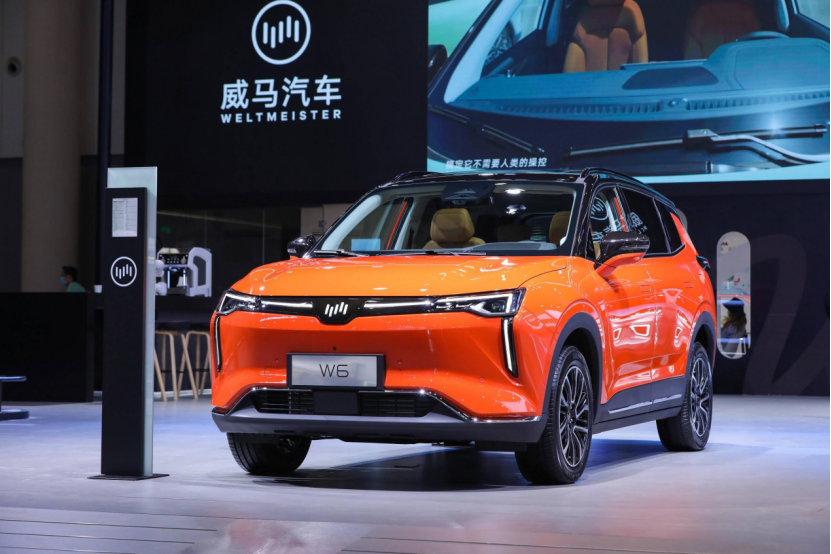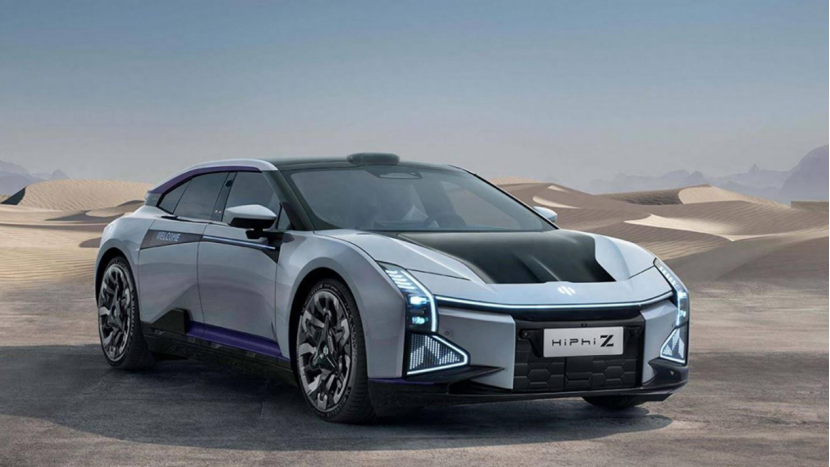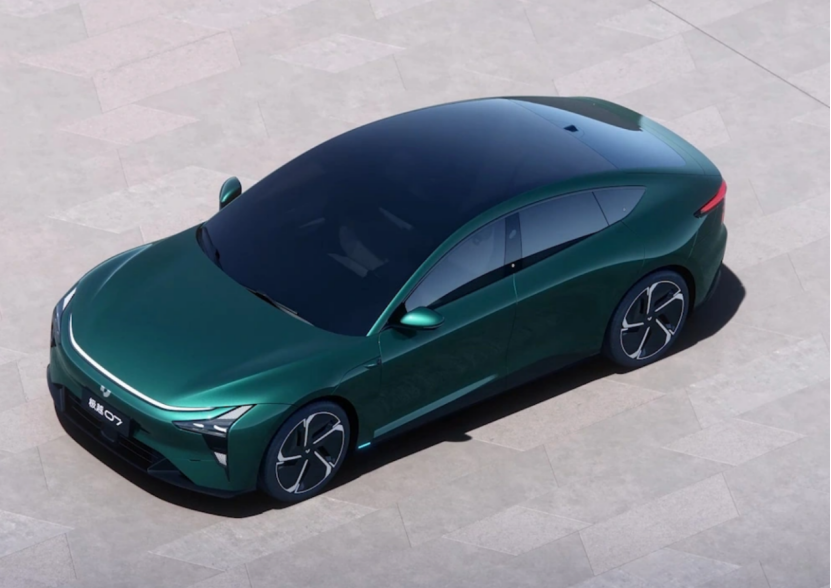New Forces' "Resurrection Race" Ignites, Leaving No Room for Complacency
![]() 07/25 2025
07/25 2025
![]() 591
591
In July, China's new energy vehicle market witnessed a significant "resurrection wave," with automakers like WM Motor, HiPhi, and Geely EV, who had previously faced operational crises, successively unveiling restructuring plans. WM Motor, long silent, announced the resumption of EX5 and E.5 model production in September, aiming for annual production and sales of 10,000-20,000 units, with an ambitious goal of reaching one million units by 2030. Meanwhile, HiPhi encountered a halt in its restructuring due to a default on a $600 million capital injection from Middle Eastern investors. Geely EV, on the other hand, is expediting negotiations with 3-4 restructuring parties...
However, capital infusion and capacity restart are merely the opening acts in this high-stakes game. In a fiercely competitive market where BYD sells a million units annually and Xiaomi tops sales charts in a single month, the "second chance" for automakers trailing behind feels like a battle with no retreat. Cracks in consumer trust, technological generational gaps, and capital chain concerns pose formidable hurdles, and the final outcome of this resurrection race could be even more ruthless than the initial elimination.
▍From Elimination to Resurrection
As the new energy vehicle industry enters its elimination phase, the revival of new force automakers has morphed into a game of interests among multiple capital parties. WM Motor is advancing its production resumption with the "10 billion strategic investment + asset-light operation" model, leveraging a "Store+Station+Spot" channel system to rebuild market reach through sales terminal revamp, service network densification, and scenario-based touchpoint deployment.
Behind this model innovation lies the short-term liquidity support from a capital injection exceeding 10 billion yuan from Shenzhen Xiangfei Automobile Sales Co., Ltd. However, the financial reality of 20 billion yuan in debt makes its 2030 target of "1 million production and sales" more of a vision statement to the capital market than a feasible plan.

HiPhi's resurrection dilemma highlights the risks of cross-border capital operations. The default on the down payment by Middle Eastern investors not only stalled the restructuring process but also exposed the limitations of emerging market capital's understanding of the new energy vehicle industry. When brand premium fails to hedge geopolitical risks, seemingly attractive overseas capital can turn into the final straw that breaks the enterprise. This echoes a similar case three years ago where a new force automaker saw its factory shut down due to order cancellations by Southeast Asian capital.
Geely EV's restructuring negotiations demonstrate the strategic tug-of-war between traditional automakers and technology companies. Amidst the industry trust crisis sparked by the Xiaomi SU7 incident, potential restructuring parties have significantly raised their scrutiny of intelligent driving assistance system safety. This technical veto mechanism signals a shift in capital parties' decision-making logic, from merely pursuing traffic to valuing underlying technological validation.
Capital has emerged as a key driver of resurrection, while policy dividends have created a buffer zone. In 2024, new energy vehicle production and sales surpassed 10 million units, with a penetration rate exceeding 40%. For 2025, sales are projected to reach 16.5 million units (including exports), with a penetration rate of over 50%. Additionally, technological iteration presents opportunities in niche markets: solid-state batteries and megawatt-level fast charging (e.g., BYD's 400-kilometer range replenishment in 5 minutes) propel industry upgrades.

Resurrected automakers generally adopt a "conservative strategy." WM Motor prioritizes the resumption of production for the mature EX5 and E.5 models, leveraging existing supply chains for a swift recovery. HiPhi continues to focus on high-end electric vehicles, steering clear of direct competition with market leaders. Channel innovation has also gained prominence, with WM Motor proposing a three-tiered "Store+Station+Spot" network, blending direct stores, cooperative outlets, and community service points to cut costs.
While this asset-light operation alleviates financial pressure, it also exposes technological shortcomings. WM Motor has yet to announce plans for an 800V platform or urban NOA intelligent driving, widening the technological gap with Xiaomi and Huawei and posing hidden risks for future market competition.
▍Few Opportunities Remain in the Red Ocean Market
The primary challenge for resurrected automakers lies in the red ocean market's fierce competition and trust deficit. The current market landscape has undergone a "fault-line" differentiation, with the new energy vehicle market resembling a "6+3+1" distribution: head enterprises like BYD and Tesla capture 60% of the share, other traditional automakers and new forces compete for the middle 30%, and the remaining 10% is left for smaller players. Newly restructured forces like WM Motor clearly occupy that 10% niche, and their ability to carve out a niche is questionable.
Resurrected brands must not only withstand the crushing pressure from giants but also mend the consumer trust crisis. You Tianyu, Dean of the Capital Research Institute at Capital Union, remarked, "There's no room for 'small but beautiful' in China's automobile market. The scale effect of automakers has already emerged, and brand perceptions are mature, which cannot be rebuilt in the short term. Automakers that faltered or withdrew midway have lost their first-mover advantage and face an uphill battle to re-enter the competition."
Meanwhile, experts also indicate that in the current market environment, new energy vehicle consumers are more cautious when selecting products, favoring brands with a solid reputation and stable development. For those new force automakers that have previously faced difficulties, consumers tend to adopt a wait-and-see approach, fearing potential risks post-purchase.

According to an industry survey by Ping An Securities, over 60% of consumers harbor doubts about the long-term service capabilities of "resurrected brands," and this trust deficit poses a significant obstacle to sales conversion. The capital chain remains the biggest uncertainty in the resurrection race. Although some enterprises have received capital injections, their long-term profitability is uncertain. WM Motor, burdened with over 20 billion yuan in debt, faces cautious suppliers demanding "mortgage guarantees" for cooperation. Despite receiving a 10 billion Thai baht credit line from Thailand, Nezha Auto's sales in January-February this year were only a few hundred units, far from the industry survival threshold of 100,000 units. Overseas media reports reveal that Nezha Auto has had some subsidy payments withheld by the Thai government due to its inability to produce an agreed number of locally assembled cars and is also being pursued by 18 local dealers for debts totaling approximately $6.17 million.
More critically, capital markets' patience with trailing automakers is waning. Evergrande Auto's $500 million financing has been repeatedly postponed, and HiPhi's $600 million payment is in arrears, reflecting capital's caution towards "second-time blood transfusions."
The technological discontinuity resulting from the downtime period has become a fatal wound. WM Motor missed the window for intelligent driving upgrades from 2023-2025. The penetration rate of L2+ intelligent driving soared from 39% to 53%, and the 800V platform gradually became the norm, while WM Motor will still rely on the 400V platform, exhibiting obvious shortcomings in product capabilities across multiple dimensions.
At the supply chain level, WM Motor needs to reestablish supplier relationships disrupted by production halts, while some core component enterprises have shifted their cooperation to Xiaomi and Huawei. Industry analysis points out that R&D investment intensity among trailing automakers is less than one-fifth of that of leading enterprises, and talent loss further slows down the pace of technological catch-up.
Faced with a triple siege, the key to breaking the deadlock for resurrected automakers lies in trust reconstruction and precise positioning. For trust repair, experts suggest implementing "automaker bankruptcy insurance," collecting premiums based on sales volume, and providing after-sales coverage for bankrupt brands. WM Motor plans to use trade-in subsidies for old customers and centralized procurement by ride-hailing platforms to bind the B-end market, reducing resistance in C-end sales.
According to incomplete statistics from Auto Market Insight, there were once over 110 brands in the Chinese market, with currently about 20-30 active ones, eliminating over 73% in the past three years. The "resurrection race" for new forces is essentially a race against time. Capital infusion and capacity restart are merely the tickets to enter the game, with the next 3-6 months serving as a critical window for survival: WM Motor must prove the feasibility of the 10,000-unit target for EX5 by year-end; HiPhi urgently needs to resolve the funding default crisis; Geely EV must swiftly finalize its restructuring to avoid a second shutdown.
The final outcome of the market may echo Zhu Jiangming, the founder of NIO: "There will be no more than 10 surviving automakers in the future." When technology, capital, and trust become the three unavoidable hurdles, a fleeting "resurrection" that fails to cross the 100-day life-or-death line will merely serve as a prelude to extinction.
Editor: Yang Guo
Intern: Jia Ruiyang
Typesetting: Yang Shuo
Image Source: WM Motor, HiPhi, Geely EV





